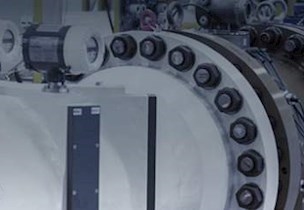5 reasons why you should re-calibrate flow meters
Can your flow meters measure correctly without periodical re-calibration? We asked 5 industry professionals to share their opinion on the necessity of re-calibration:
1. Re-calibrate to avoid financial surprises
"Re-calibration is preventive metrological maintenance. You do it because you want to avoid costly accidents."
Dr. Jos van der Grinten, Physikalisch-Technische Bundesanstalt
2. Re-calibrate to ensure compliance with regulations
"The primary argument for re-calibration on Siri is compliance to government regulations and terms and conditions in Tie Inn agreement with partners involved in the Siri field. Second, it is always an evaluation of what risk you as a company are willing to take on a specific measurement like safety, environment, cost or operational up time."
Preben Hjuler, Senior Metering Engineer, INEOS
3. Re-calibrate to confirm accuracy and reduce uncertainty
"The re-calibration is to confirm that the meters are behaving well. We do this every fifth year. We use these meters for both sales gas and allocating fuel gas. Some of them are used for reporting to the Norwegian Environment Agency concerning the emission of CO2. By calibrating gas, we also reduce the uncertainty for the meters."
Ole-John Melkevik, Specialist Operation & Maintenance, Equinor
You might be interested in:
Uncertainty explained: Class half meters
4. Re-calibrate to avoid systemic bias in your meter
"Metering should be based on fair trade between parties, where no party benefits financially from measurement errors at the other party's expense. Traditionally, re-calibration is the only way to know if your meter has a systematic bias. For the future of metering, we foresee new methodologies, based on the combination of active diagnostics for meters and a big data analytics approach, which will complement the traditional periodically scheduled re-calibrations."
Lennart van Luijk, MSc. Senior Specialist Flow Metering | Data Scientist, DNV GL - Oil & Gas
5. Re-calibrate to reduce risk
Re-calibration is necessary to reduce technical and financial risks. Technically, to check the meter's general condition, the transducers, etc. Financially, to ensure the correct custody transfer in the supply chain and avoid uncertainty. From a laboratory point of view, it is also interesting to look at how to apply historical calibration data of the meter to identify the most accurate calibration intervals.
Jesper Busk, Vice President Gas Flow Technology, FORCE Technology
Guide - Understand calibration certificates
learn more about calibrating meters and measuring instruments here.
Our services,Related articles

8 things to remember when shipping gas meters to a calibration facility
/Article
E-guide: Understand calibration certificates
/Article
Learn how to read, interpret and understand gas calibration certificate with this e-guide.
Reducing operational uncertainty in gas transfers
/Article
Importance of managing fiscal risk in large volume gas custody transfer.
Uncertainty explained: Class half meters
/Article
Most laboratories in the world don’t have uncertainty levels adequately low to perform accredited calibrations of a class half meter. How does this affect the gas metering industry?
Uncertainty explained: How to calculate laboratory CMC?
/Article
What is CMC, and how does it involve the uncertainty of the laboratories?
Uncertainty explained: Uncertainty budgets
/Article
Which factors are important to know and address when working with uncertainty budgets?
Uncertainty: How is a calibration result reached?
/Article
To understand uncertainty calculations, it is necessary to know how a calibration result is reached.

